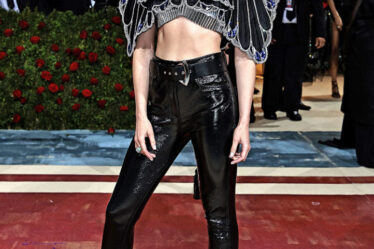While cosmetics, skincare, fragrances and hair care have often been touted as small luxuries that consumers can’t give up even in the hardest of times, the US’s two biggest beauty retailers offered duelling outlooks this month.
Soon after earnings in late March, Ulta Beauty chief executive Dave Kimbell laid out how the retailer was seeing demand for both mass and prestige segments slow meaningfully at a J.P. Morgan conference on April 3. Hair care and higher priced makeup felt this pressure the most. The company’s stock fell as much as 15 percent, and dragged down share prices at beauty companies ranging from Coty to even the can-do-no-wrong E.l.f.
But this week’s results from LVMH posed a remarkably different picture for both its beauty retail business, Sephora, and its brands like Dior Beauty. In fact, beauty was LVMH’s brightest spot in its first-quarter results, announced Tuesday. Its Selective Retailing unit, inclusive of Sephora, saw sales rise 11 percent on an organic basis. This was followed by strong performance in the French conglomerate’s Perfumes and Cosmetics business group, which saw organic revenue increase by 7 percent; hero perfumes like Dior’s Savauge and Miss Dior continued to perform, while the brand’s ultra luxury positioning of its Rouge makeup launch was touted by the company.
How to explain these two wildly different outlooks?
Ulta Beauty’s moderation comes after roughly four years of positive, outsize growth, so it is no wonder Kimbell’s comments set off alarm bells. But many analysts said that Ulta’s tumble was overblown, and that it’s still too early to tell whether a beauty slowdown will be long lasting. I agree with that; running a beauty retailer is different from running a beauty brand, and we shouldn’t assume they’re all feeling the same crunch.
But Ulta’s bigger problem is its competition. The retailer’s prestige makeup segment took a hit because there are simply more places to buy higher priced beauty, said TD Cowen analyst Oliver Chen. Sephora’s shop-in-shops inside Kohl’s department stores, which are often neighbours in the same strip malls as Ulta’s stores, are by far the biggest threat.
Kohl’s said in March that it will introduce Sephora into 140 more stores by the middle of next year, on top of its current 910 locations. Kohl’s chief executive Tom Kingsbury said its Sephora partnership, which began in 2021, delivered $1.4 billion in sales in 2023.
It’s not just Sephora, though. Department store beauty sales have also been on the rise and more brands are selling on Amazon. (The Estée Lauder Companies finally took the plunge with Clinique in March.)
Ulta only operates in the US, so part of its issue is that it isn’t being lifted by other markets like Europe and Asia. (The retailer plans to debut in Mexico next year.) Today, American consumers are navigating high inflation and rising credit card debit. Prestige beauty – makeup and skin care products priced around $30 to $80 – has been in a tough spot for that reason. Aspirational shoppers seem to be more deliberate with their purchases, favouring either luxury (think: Dior Beauty, Creed and the like) or mass and masstige dupes.
Sephora is expanding not only in the US, but also Europe and the Middle East. That global footprint gives it options when certain countries or consumer segments slow down (the expansion hasn’t been entirely smooth; Sephora announced it will shutter its Korean operations in May and continues to face intense competition in China).
For Ulta Beauty to regain share from its slew of competitors, it’s going to have to rely on the right mix of products, including exclusives to draw shoppers in store, and likely invest in higher touch clienteling. A greater push on its loyalty program would be additive, but perhaps it’s time to level up its own shop in shops in Target.
Until now, the partnership hasn’t been an exact replica of Ulta Beauty’s owned assortment and visual displays, but judging with how Sephora and Kohl’s is performing, maybe it should be.
Here are my top picks from our insight and analysis on beauty and wellness this week:
1. How to Launch a Black Beauty Brand

In a three-part series, The Business of Beauty explores how Black founders Monique Rodriguez, Danessa Myricks and more built, launched and scaled their multi-million-dollar businesses. In part one, a look at how these entrepreneurs found their niche and harnessed early lessons that were critical to their growth.
2. How to Scale a Black Beauty Brand

Landing a retail partnership is often seen as a major milestone for beauty founders — but it brings a bevy of new challenges, from the logistical complexities to setting a marketing budget. Black entrepreneurs, who typically have far less capital to work with, often face tough choices.
3. How to Raise Money as a Black Beauty Brand

Black founders carry a markedly higher burden when it comes to educating investors on the value and viability of their business ideas — but there is an art and science behind knowing when your brand is ready and what kind of investors will be the best fit.


